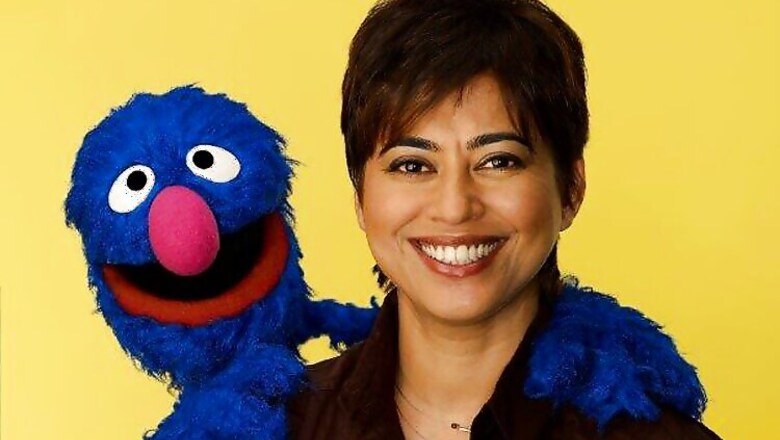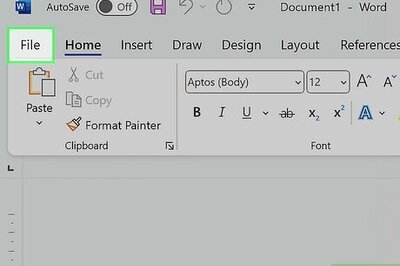
views
The Annual Status of Education Report 2013 finds that literacy and numeracy skills have declined in the past six years among children ages 5-16 who attend India’s rural schools. The Government of India, as well as private-sector and civil-sector businesses, are looking for innovative ways to reverse the decline and provide access to quality learning for all children. Among the challenges are a lack of engaging educational content, teacher shortages and poor infrastructure.
Results of the “Play ‘n’ Learn” initiative, a collaboration between the Qualcomm Wireless Reach initiative and Sesame Workshop in India (SWI), suggests game-based learning using smartphones and tablets can improve literacy and numeracy among India’s young school children.
Sesame Workshop in India Managing Director Sashwati Banerjee spoke to IBNLive and shed light on the campaign.
Question: What is the motivation behind Sesame Workshop in India’s initiatives and campaigns?
Answer: Around the world, there is a proven investment return to high-quality early childhood care and education (ECCE); it has been clearly linked with benefits to children and society as a whole (improved maternal and child health, better nutrition practices, better quality of life and a holistic development). ECCE is an instrument to guarantee children’s rights and contributes powerfully to reducing poverty, the overarching objective of the Millennium Development goals. According to James J. Heckman, Nobel Laureate in Economics and Professor of Economics at the University of Chicago, “the highest rate of return in early childhood development comes from investing as early as possible, from birth through age 5, in disadvantaged families”
Sesame Workshop India’s flagship program Galli Galli Sim Sim is a multi-media educational initiative that combines high quality educational content with the power of media and educational outreach to help children get ready for school and for life. With over 81.2 million children in India who do not have access to Early Childhood Care and Education (ECCE) and a large learning deficit among primary school children (6-8 years) , there is an urgent need to focus on programs, dialogues and discourses to highlight the need for investing in high quality early childhood education programs.
Since our debut in 2006, we have reached over 100 million kids in India and demonstrated impact on children’s language and literacy, physical wellbeing and social emotional wellbeing through our various interventions.
Question: What all challenges SWI faces while carrying out campaigns to educate children?
Answer: There are multiple challenges that we face. As a content developer and provider, our biggest challenge is to find partners who can help us distribute the content to children and families in order to provide equitable access to all children. We have been lucky to have Turner Broadcasting and Doordarshan as our core broadcast partners.
As one of our objectives is to strengthen the ECCE component in government pre primary (ICDS) and primary schools we often face infrastructure and system challenges such as teacher absenteeism, low motivation of Anganwadi workers, lack of adequate resources and overall a low knowledge about the importance of ECCE. It is further compounded by the fact that many parents themselves are not aware of what is age and developmentally appropriate for children in this age group.
While we are using more and more digital technology to engage and educate young children that too comes with inherent challenges: accessibility, affordability, bandwidth and connectivity are a few. Often educators are hesitant to adopt new technology as they themselves aren’t very comfortable in using it. In many communities, young children are the first learners in the family. As a result, they are not able to go back to their parents in case of any query.
However, even with all the limitations, we truly believe that our work and the various partnerships we have formed over the years can play a huge role in shifting the paradigms of early childhood education in India.
Question: How does SWI ensure that the program is financially sustainable?
Answer: Sustainability is always a key issue in social development. As other non-profits, we too rely on donor funding for our programs. Our intention is always to have projects that can live beyond our presence. Towards this we strongly believe in and work with partners to build their capacities. We advocate with the government at local and state levels to adopt and scale up programs as we feel that in India the government is best positioned to provide the largest scale and sustainability for education.
For financial sustainability of the organization, we have laid the groundwork to generate funding from a diverse pool to continue to innovate and experiment with programs that can help children in India be smarter, stronger and kinder.
Question: Any resistance from parents/ children to the Play ‘n’ Learn program?
Answer: There was no resistance from children, in fact, they were excited to play games as part of their regular classes. Findings from the research revealed that with time, children having no prior experience in using a tablet showed increased level of proficiency for switching on and off the tablet, responding to direction in the game and progressing in the game. Children showed a willingness to share the tablet amongst them and wait for their turn. Peer support played a huge part at the start of the project as children were observed helping each other in completing games. Teacher’s attitude towards multimedia in the classroom also improved by the end of the intervention. Teachers shared that the tablet sessions had a positive feedback from the parents too.
Question: What was the criterion for selecting the areas for the Play ‘n’ Learn program?
Answer: Play ‘n’ Learn was initiated as an experiment in a low resourced community in Delhi and then moved to government primary schools in Delhi and Bihar for phase II of the project. The selection was guided by the research that we wanted to conduct: whether providing digital games helps improve educational outcomes in children in low income and low resourced populations. The criteria for choosing the families was based on their monthly income being less than Rs. 15000 and the presence of a 6-8 year-old child studying in a government school in grades 1-3.
Question: Any plans to make Play ‘n’ Learn initiative pan India?
Answer: The Play ‘n’ Learn initiative was able to reflect the huge potential of technology as a long-term, large-scale supplement to the existing educational offerings available to young children. The initiative provided valuable lessons and evidence of improvements in a classroom environment and children’s learning experience.
Digital intervention has opened doors for significant and qualitative improvements in children’s learning outcomes. Integrating content in the games and introducing them parallel with the NCERT and/ or state-level curricula would create greater consonance and facilitate the uptake of the digital intervention. For bringing about digital revolution in the education sector, tech companies have to take the lead and help enable a strong ecosystem by providing technology-driven educational devices which should be backed by creative and engaging content provided by organizations like ours. This calls for a number of stakeholders across the country to come together and support this initiative and thereby strengthen the education sector in India.
At our end we have made the games available free of cost on Google Play and they are also available on our website www.galligallisimsim.com




















Comments
0 comment